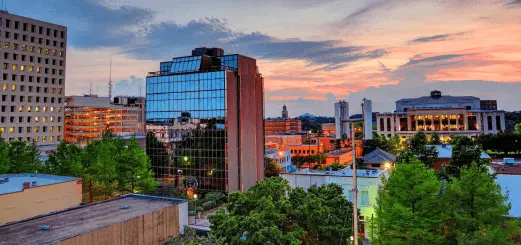HOUSTON – (By Ralph Bivins, Realty News Report) – Last week, as Good Friday was being remembered, I learned the building that I love the most was being shut down by the City of Houston.
Located on Montrose Boulevard, the beautiful Italian Romanesque structure was designed by Houston architect William Ward Watkin, who designed the original Museum of Fine Arts Houston, a number of buildings at Rice University and numerous other local landmarks. Watkin was a thought-leader in church architecture in the mid-1900s.
Originally a church, the Montrose edifice was renovated and became the Freed-Montrose Library public library in 1988.
Under municipal management, the Montrose library building has been deteriorating and deferred maintenance issues have been mounting, according to the Houston Landing publication.
So last week, the city announced the Montrose library would close because of “ongoing safety and facility issues that cannot be resolved in a timely manner.” Then Mayor John Whitmire announced Houston Public Library Director Rhea Lawson was being replaced.
The fate of this William Ward Watkin masterpiece structure in Houston’s Inner Loop is uncertain.
Why do I love this building so much? I’m writing this on Easter Sunday. So I will go to full disclosure mode.
Opening in 1946, the building was originally Central Church of Christ. I was baptized there as a boy. As a pre-schooler, it’s where I sang “Jesus Loves Me.”
I received a great deal of foundational religion instruction in that church building. I learned first-hand about the woes of poor children in east Montrose where alcoholism or incarceration destroyed families and left little ones in need of shelter.
This Montrose building is sacred to me, not that I’m special. It happens at all houses of worship where people experience weddings, funerals, baptisms and the occasional spiritual connection to something they consider to be holy.
Even though an MAI real estate appraiser can’t quantify it, we should not ignore the emotional values that humans hold for sacred places. Across the nation, there are some 100,000 “emptying houses of worship” that are obsolete now or appear to be heading toward transitioning to other uses in a few years, according to a recent report in Urban Land magazine. It will be a painful experience for many congregants who see their church become a redevelopment opportunity.
